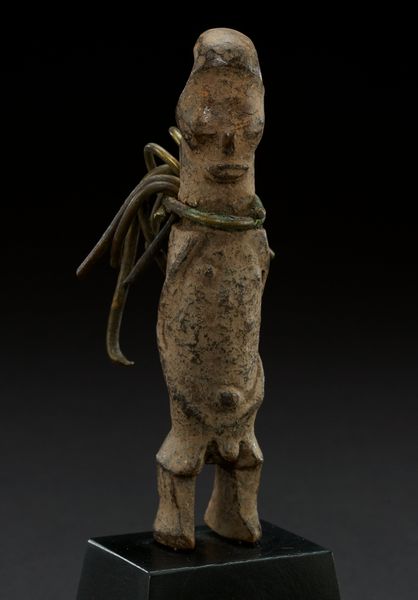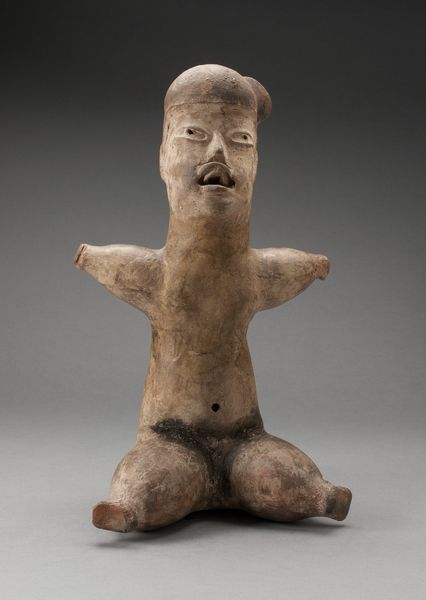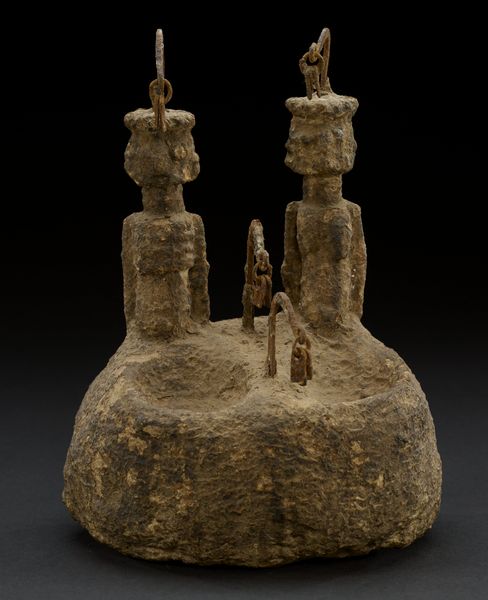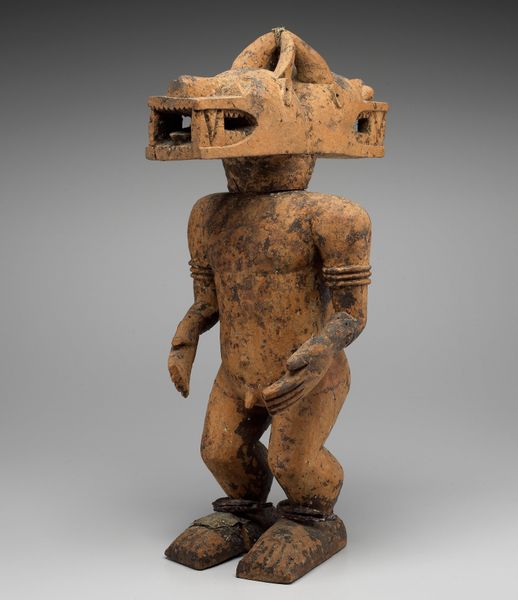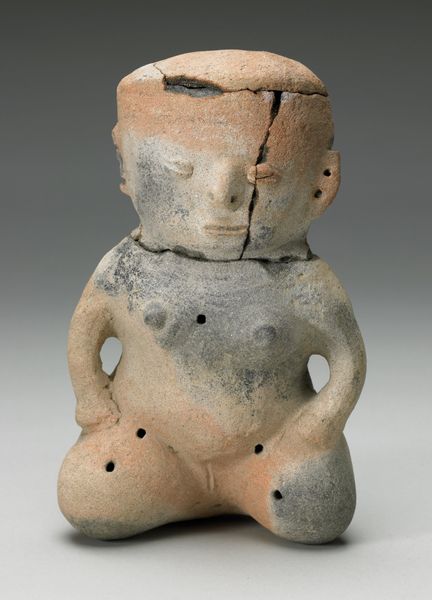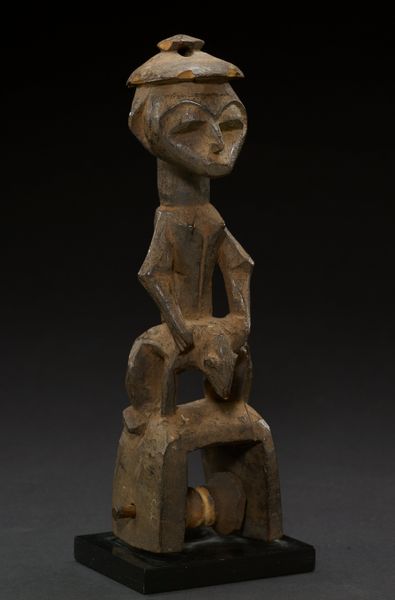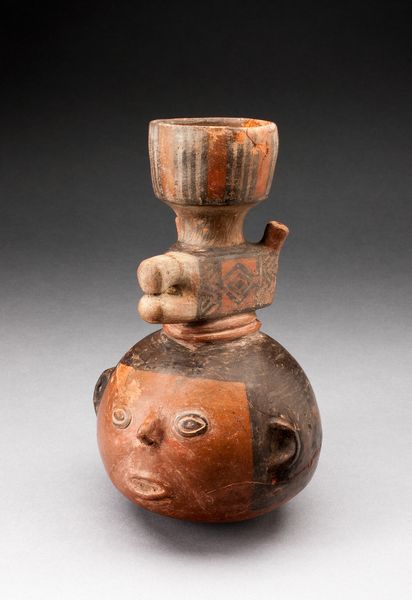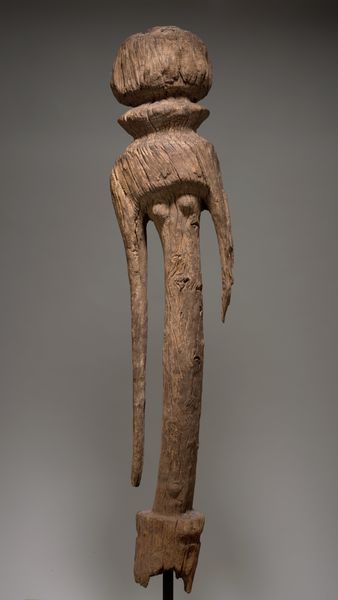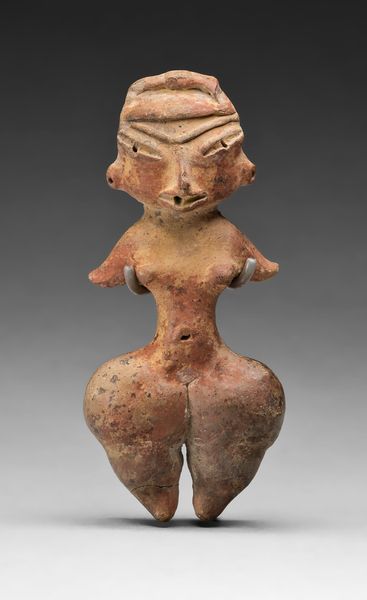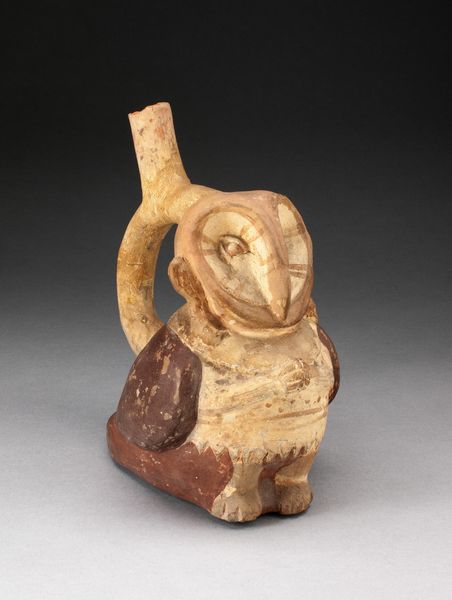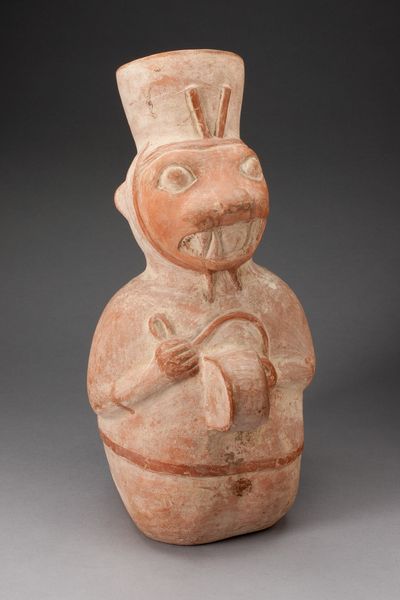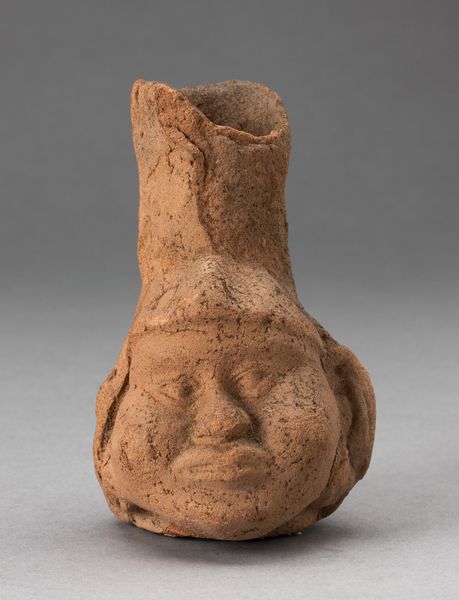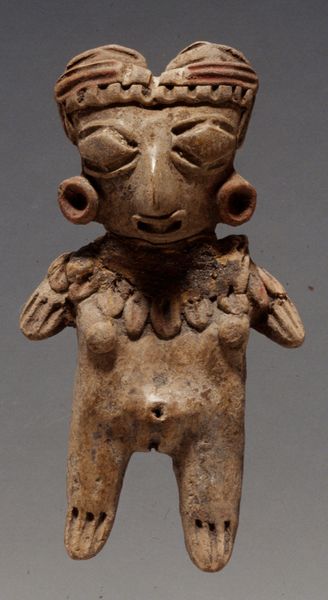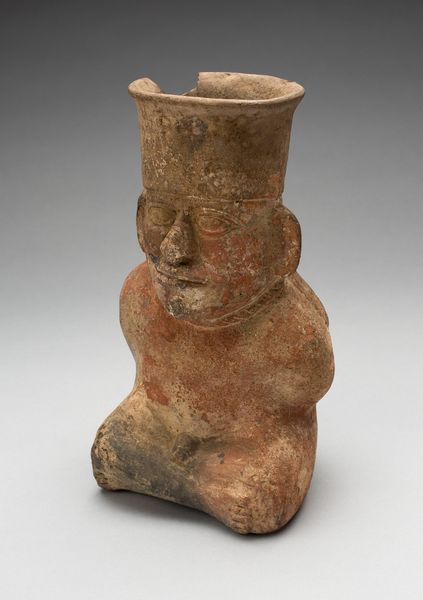
ceramic, sculpture, wood
#
african-art
#
sculpture
#
ceramic
#
figuration
#
sculpture
#
wood
Dimensions: 8 1/4 × 2 1/2 × 2 5/8 in. (20.96 × 6.35 × 6.67 cm) (with base)
Copyright: Public Domain
Editor: We’re looking at a Power Figure from the early 20th century, made of wood and ceramic. What strikes me is the texture, almost like cracked earth, and the startling white of the eyes. What can you tell us about its composition? Curator: The figure presents a compelling study in contrasting forms. Note the elongated head versus the spherical mass below. The hollowed-out cavity, the starkness of the inserted material. The very roughness of the materials chosen contributes to the overall impact; a visual language emphasizing tactility and, arguably, impermanence. Consider the semiotic weight of the object's features: The large head may signify knowledge or spiritual capacity, counterpointed by the earthiness of the material. What sort of dialogue can we establish here, between form and concept? Editor: I’m intrigued by the juxtaposition of those textures. Does the roughness of the sculpture contribute to the intended aesthetic? Curator: Precisely! The roughness isn't simply a consequence of the materials but an active element. One could propose that it mirrors the harsh realities it was created to address; there's a dialogue created, texturally and symbolically. The form, restricted by material choice, directs our viewing towards these very aspects. Does it communicate the intended sense of power or protection more effectively? Editor: It's interesting how those deliberate material choices really drive the artwork's message. Thanks! Curator: Indeed. A focused assessment of its compositional elements reveals so much.
Comments
No comments
Be the first to comment and join the conversation on the ultimate creative platform.
